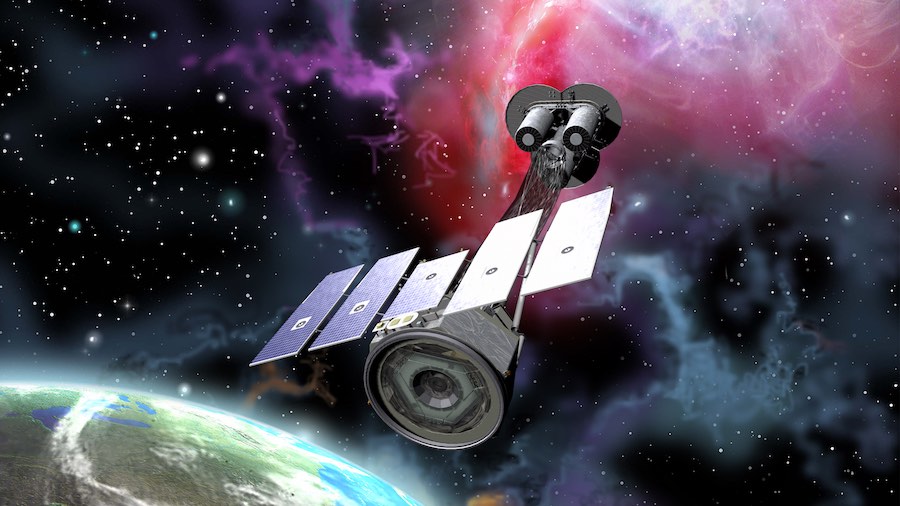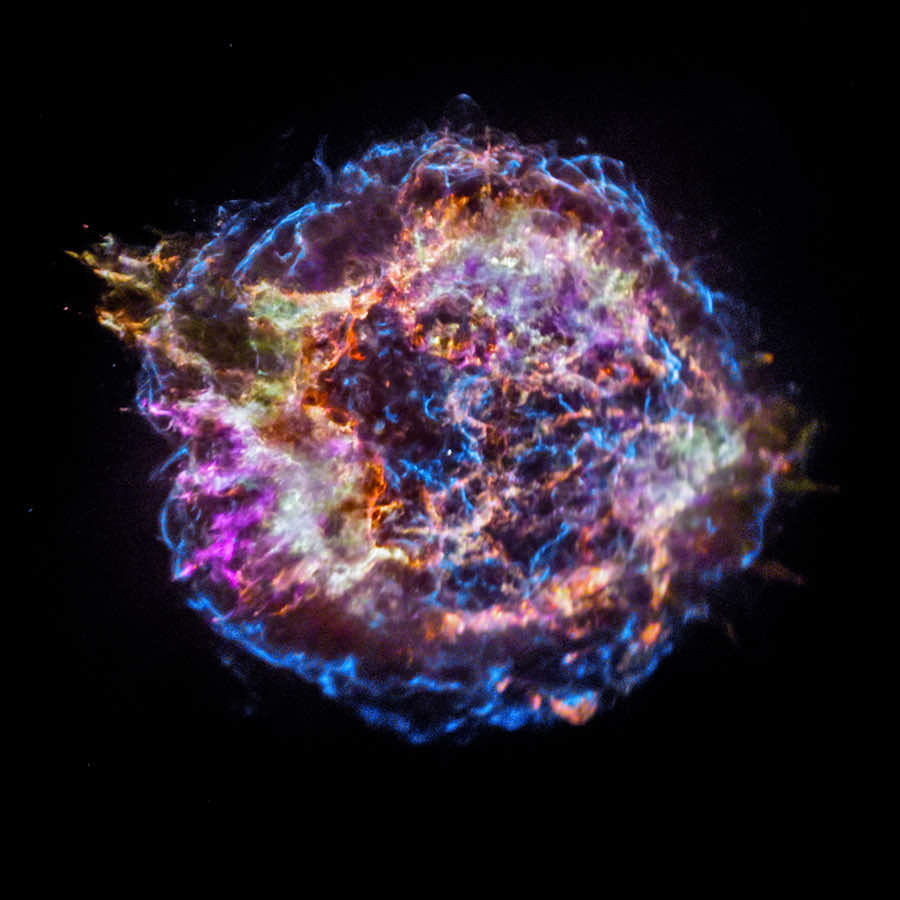
A NASA astronomy satellite that launched Dec. 9 from Kennedy Space Center on a SpaceX rocket has started observing the X-ray universe, beginning a mission to study the nature of black holes and the super-dense skeletons left behind by exploded stars.
The Imaging X-ray Polarimetry Explorer, or IXPE, mission launched Dec. 9 aboard a SpaceX Falcon 9 rocket, which delivered the satellite to a unique equatorial orbit at an altitude of about 373 miles (600 kilometers).
After separating from the Falcon 9 launcher, the 727-pound (330-kilogram) IXPE spacecraft unfurled its solar panels and sailed through a series of tests. On Dec. 15, less than a week after launch, IXPE extended an origami-like boom holding the satellite’s three X-ray telescopes, giving the satellite a length of about 17 feet (5.2 meters) end-to-end.
The extendable boom is the right length to allow the telescopes’ mirrors to focus X-ray light back on detectors inside the main body of the spacecraft, giving IXPE satellite the ability to register high-energy waves emitted from black holes, neutron stars, and X-ray sources invisible to telescopes tuned to observe in other wavelengths.
“The commissioning has been successfully completed,” said Martin Weisskopf, IXPE’s principal investigator from NASA’s Marshall Space Flight Center in Huntsville, Alabama. “The two most nerve-racking elements of the commissioning were the solar panels deploying and the boom deploying.”
With the boom extension complete, ground teams spent about three weeks checking the observatory’s maneuvering and pointing capabilities and aligning the telescopes, according to NASA.
“All spacecraft functions have been activated and verified during commissioning,” Weisskopf said in a Jan. 10 press briefing at an American Astronomical Society meeting.

IXPE is one of several X-ray astronomy missions in NASA’s portfolio, but it’s the first tuned to measure the polarization signal of X-ray light. Previous telescopes, which must in space to detect cosmic X-rays, have imaged X-ray sources in high angular resolution, measured their spectroscopy, or chemical fingerprints, and studied the time variation of X-ray signals.
“By doing this mission, we are adding two variables to the astrophysics toolkit to understand these sources,” Weisskopf said before IXPE’s launch. “That’s the degree of polarization, and the direction associated with polarization.”
The polarization of X-ray light a measurement of the direction of its electromagnetic field, a telltale signal that can inform astrophysicists about the extreme environments around black holes and supermassive objects, including the supermassive black hole at the center of the Milky Way galaxy.
Weisskopf said Jan. 10 that IXPE’s detectors, which are the first designed to measure X-ray polarization from space, observed bright calibration sources with known properties to help ground teams fine-tune the alignment of the missions’s telescopes.
IXPE’s three identical telescopes can measure the energy, position, time of arrival, and polarization of each X-ray photon they collect.
Satisfied that the IXPE mission is ready for its science campaign, NASA managers gave the green light for the spacecraft to begin the first of its regular astronomical observations Jan. 11.
IXPE’s first target is named Cassiopeia A, or Cas A, a giant debris cloud surrounding a super-dense neutron star around 11,000 light years away. Cassiopeia A formed around 350 years ago, when a star estimated to be five times more massive than the sun exploded in a violent supernova.
The explosion sent matter from the star’s interior out into space in all directions at nearly the speed of light, leaving behind the star’s collapsed core, a neutron star. IXPE’s observations will yield insights into the magnetic field surrounding the neutron star.
The observatory will observe Cassiopeia A for about three weeks. It’s the first of 33 planned science targets selected for the first year of IXPE’s mission, Weisskopf said.

Mission planners have also set aside observing time for IXPE to turn its telescopes toward “targets of opportunity,” such as features or objects that suddenly brighten in the sky, Weisskopf said. “So if something interesting comes up, we can go and look at it.”
The flight plan has time for observations of about 40 targets overall in IXPE’s first year of operations. IXPE will aim its telescopes at each targets for days or weeks at a time, collecting long X-ray exposures to allow scientists to sort out polarized signals from background noise.
NASA is funding IXPE for a two-year primary mission, which the agency says adds up to $214 million, including development, the launch, and operations. The spacecraft doesn’t need any rocket fuel for pointing or orbital maneuvers.
IXPE is a partnership between NASA and the Italian Space Agency, which provided the mission’s X-ray detectors and a ground station Kenya to receive science data from the satellite when it flies overhead.
According to Weisskopf, X-ray polarization can tell scientists about the spin of a black hole. Theoretical calculations show that the degree of polarization of an X-ray signal varies with the energy of the magnetic field at its source.
“Black holes don’t have many properties, but one of them is spin,” he said. “So this is a very fascinating use of the polarimetry to determine something about the nature of its source, and that story holds true in many other cases.”
Other targets for IXPE include the supermassive black hole at the center of our galaxy, known as Sagittarius A*. IXPE’s measurements may confirm whether the black hole was much brighter just a few hundred years ago, as some scientists believe.
IXPE will also look at more distant targets, such as blazers at the centers of other galaxies. Blazars have powerful jets of radiation that happen to be aimed directly at Earth.
The mission will also study the polarization of X-rays coming from magnetars, which have the strongest magnetic fields of any star, some one thousand trillion times more intense than Earth’s magnetic field.
Email the author.
Follow Stephen Clark on Twitter: @StephenClark1.
